Having a beautiful bathroom is a goal.
Although there are many pros and cons to it, it is worth considering. Homeowners use different types of materials for bathroom floor tiles, but not all of them are suitable for a wet bathroom floor.
Your bathroom tiles should not only be of good quality but also suitable for a wet floor. Slippery tiles are hazardous when wet, so getting the right texture for the bathroom is very important.
This article is a compilation of the best types of bathroom tiles to use. But, first, let us take a look at factors to consider when choosing bathroom tiles.
Factors to Consider When Choosing Bathroom Tiles
Contemplate these factors before storming the store to pick the right bathroom tile for you.
-
Consider your budget and choose a style
Create an estimate of how much you have to spend on the tiling. Putting your budget into consideration will help you to determine the type of tile that suits you.
-
Choose color and style
Do you want a hotel-style or geometric bathroom? Hotel-style is simple and mostly includes neutral colors, but a geometric style bathroom uses printed tiles that come in geometric patterns. After deciding the style, your color scheme must not exceed three colors for a better outcome.
-
Consider tile size
Do you want traditional large tiles or small tiles? It's important to decide before you hit the store to avoid getting overwhelmed by the varieties. Also, know your bathroom size and the tiles that fit it.
-
Be creative
If you choose to use patterned tiles, don't just stick to one pattern. Mix your patterns but don't use more than three. Design according to the bathroom user. For example, children's bathrooms should not be all plain.
-
Consider maintenance
Top 10 Types of Bathroom Tiles to Use
To make things easier, here is a list of the best types of bathroom tiles to choose from.
1. Porcelain Tiles
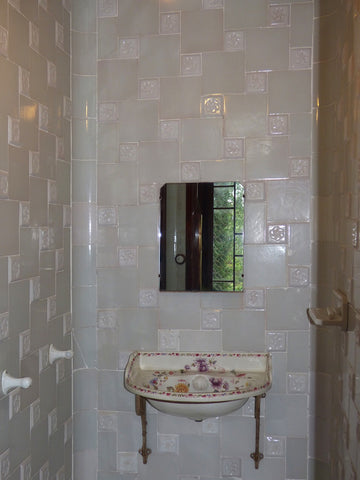
Porcelain tile is one of the best tiles for a bathroom floor. It is made from a mixture of clays just like the ceramic tile, but more expensive. Porcelain is made from kiln-dried clay at a higher temperature than ceramic. It comes in different colors and may look like natural materials such as wood or stone.
Porcelain tiles are often mistaken for ceramic tiles. Yes, they look alike. But porcelain tiles can resist water more than ceramic tiles. They are harder and more brittle. Not only are they durable, but they are also gorgeous and classy.
You’re more likely to see the same tile color all through when you chip a porcelain tile. The tile is easy to clean and maintain. It can be used on walls (in mild climates) and floors both outdoor and indoor.
2. Ceramic tiles
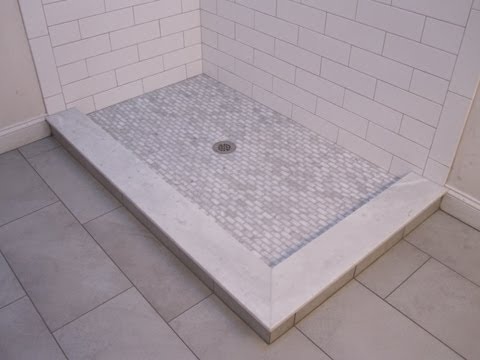
Ceramic tiles are as popular as porcelain tiles. They’re made from coarse clay and don’t absorb water as much as other types of tiles. They’re less expensive than porcelain.
Ceramic tiles also come in different colors and shapes. They can be large or small. And are durable but softer than porcelain tiles.
The clay used for making ceramic tiles is less dense; therefore, they’re prone to cracking and breaking. When you chip ceramic tiles, you are likely to see another color underneath.
They’re easy to clean, maintain, and mostly used for indoor floors and walls.
3. Stone Tiles
These tiles can come in marble, soapstone, granite, limestone, travertine, quartz, sandstone, and slate. But not all are suitable for the bathroom. Granite, marble, and limestone are perfect for the bathroom because they are water-resistant.
Stone tiles give your bathroom a natural appearance and add warmth to the room. They are beautiful, durable, and reliable. They come in different texture; cleft, tumbled, etched, or sandblasted.
Choose a texture that won't slip and more suitable for the bathroom. The disadvantages of stone tiles are that they are costly and hard to maintain. They require more cleaning.
4. Mosaic Glass Tiles
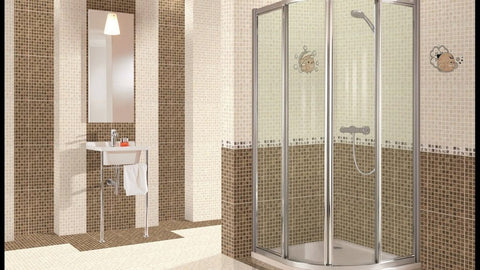
This glass tile is commonly used for countertops and walls but is also suitable for bathrooms. Mosaic glass tiles give the bathroom some sense of luxury. They produce elegant designs when combined with other types of floorings like metal or stone. Mosaic glass can be solid or multicolored.
The tile is easy to clean and resistant to stains and molds. Glass reflects more light into the bathroom and makes the mosaic pieces glow.
The tiles are durable and strong but scratch easily. They are difficult to install and very expensive.
5. Cement Tiles
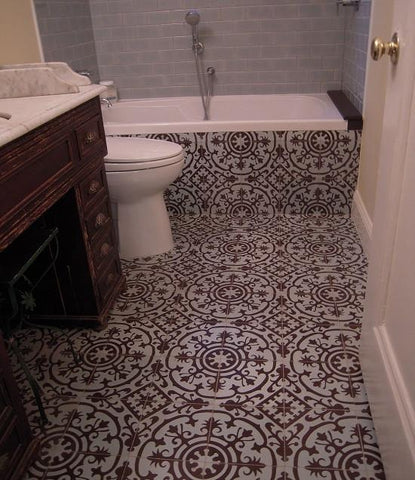
Image credit: aventetile.com
Cement tiles are decorative and beautiful. They’re durable, thick, and have excellent water resistance. These tough tiles give the bathroom an industrial look. They’re eco- friendly and blend well with the environment.
Cement tiles are porous and allow stains to stick. They’re not ideal for wet areas but will develop fewer issues in wet areas if properly installed. One reason why cement tiles are less popular is that they’re expensive.
6. Metal Tiles

These types of tiles are mostly used for walls but can also be used for floors. Metal tiles give your bathroom a sophisticated look but can be slippery on the floor.
There are varieties of textures, so choose one that is less slippery if you must use it for flooring. They also come in simple smooth square or patterned and sometimes artistic
Metal tiles are suitable for making designs. They are often mixed with other types of tiles to give you a modern bathroom. They are easy to maintain and less likely to get damaged easily.
7. Linoleum Tiles
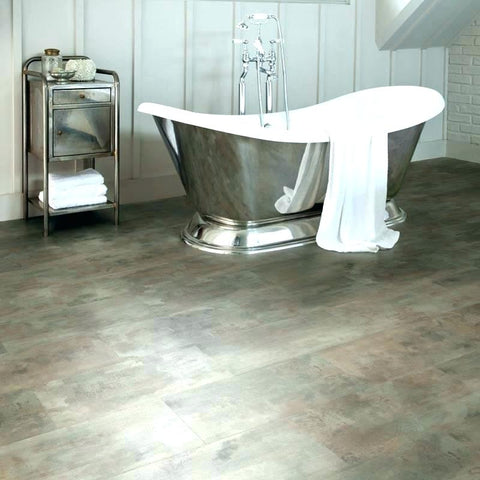
Not all linoleum tiles are suitable for the bathroom floor. Some manufacturers don't provide warranty for linoleum tiles that are installed in bathrooms. But some reliable ones are suitable for bathrooms. Make proper confirmation from retailers before making a purchase.
In other to enjoy linoleum in the bathroom, it has to be well installed. The installer should heat the seams to weld them together correctly so that water doesn't go through.
Linoleum tiles are easy to maintain and very durable. They are biodegradable, susceptible to scratch, and can age in appearance if not properly maintained. You need to wax every two years.
8. Terracotta Tiles
Terracotta tiles have an old-fashioned cozy look. They are made from red natural. If you love the rustic and earth-hued look of terracotta, you should also be ready to do the stress or at least, hire someone.
Terracotta requires extra maintenance and care. It also needs regular sealing. Some people prefer grazed terracotta because glass is melted over it to make it impermeable.
Grazed terracotta is the most recommended type of terracotta for the bathroom floor. It is easy to clean and less absorbent. It may look natural or have printed patterns on it.
9. Vinyl Tiles
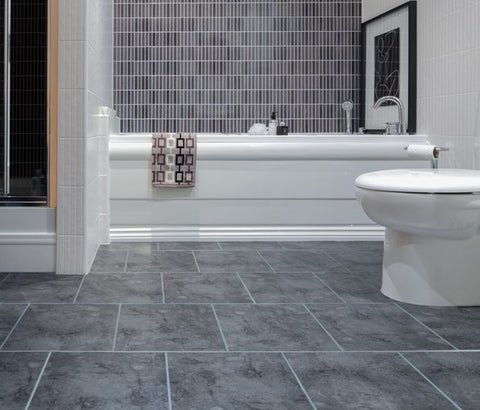
Vinyl comes in sheets, planks, or tiles. Vinyl tiles are not expensive and are most suitable for children's bathrooms or laundry rooms. They’re easy to install just like stone and ceramic tiles. You can even fix them yourself.
Vinyl tiles are low-cost, lovely, replaceable, and reusable. They don’t crack or break easily. But may not be beautiful and sparkling like porcelain and ceramic.
10. Cork Tiles
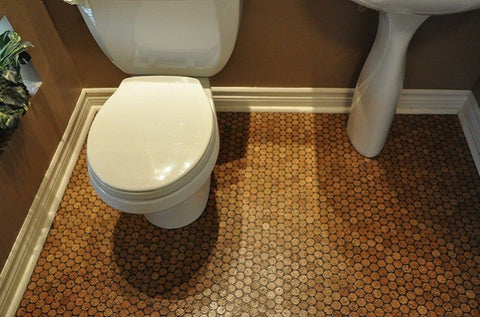
Cork tiles are suitable for bathrooms used by both children and adults. These easy-to-clean tiles provide protection and are not slippery. You can clean off stains by merely mopping. They’re beautiful tiles that are more durable than hardwood.
Cork tiles don't seal properly and are, therefore, water-absorbent.
Wrap Up
Bathroom tiling should get full attention. The bathroom is prone to water and stains. You must ensure that you consider the factors highlighted above before heading for the store.
Some of these bathroom tiles require extra attention and proper installation. If you are a do-it-yourself type of person, you may want to reconsider and invite an installer to do the job correctly.



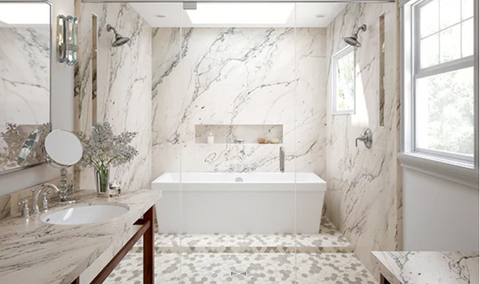
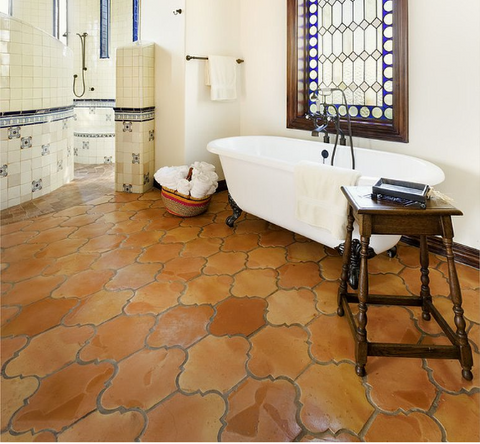

Leave a comment
This site is protected by hCaptcha and the hCaptcha Privacy Policy and Terms of Service apply.